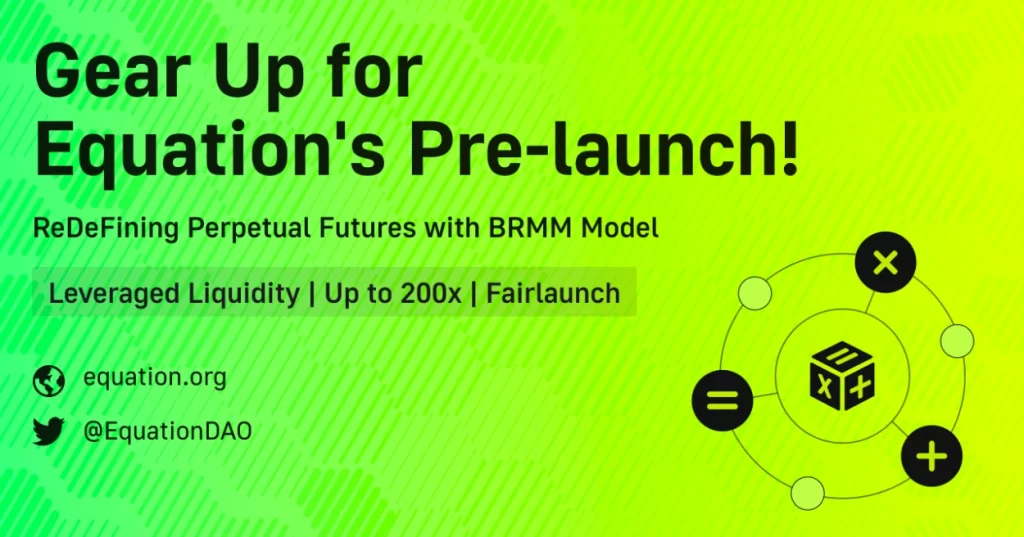2022-11-23 08:30:00
Blockchain Bridges: Trolling And Tolling To $174 Billion
Summary Blockchain bridges are gateways that allow the exchange of assets, messages, data and, most importantly, users. Based on our discounted cash flow analysis, our base case is that the blockchain bridging sector will be worth $174.1B by 2030. Here we’ll share our insights on the growth, key developments and outlook in this space, as well as how we arrived at our base case. Blockchain bridges allow the exchange of assets, messages, data, and, most importantly, users. In our base case, we value the bridging sector to be worth $174B by 2030. The blockchain bridge space is the final frontier in applied blockchain technology. Bridges are gateways that allow the exchange of assets, messages, data and, most importantly, users . While they are the source of tremendous controversy amid billions in hacks , bridges have also been used to great strategic effect. Chains like Solana ( SOL-USD ) and Avalanche ( AVAX-USD ) have employed bridges to jumpstart their blockchains by onboarding hundreds of thousands new users and billions of dollars in assets in the span of just a few weeks . Based on our discounted cash flow analysis, our base case is that the blockchain bridging sector will be worth $174.1B by 2030. Here we’ll share our insights on the growth, key developments and outlook in this space, as well as how we arrived at our base case. Blockchain Bridging Goals Bridges may present tremendous perils but also high potential rewards to users, investors, applications and entire ecosystems. Because bridges collect tolls on the information shared between blockchains, they stand to benefit enormously in an environment where economic activity is fragmented across many ecosystems. With $54.2B in assets spread across more than a dozen major smart contract platforms, we live in a multi-chain world. Blockchains are closed loop systems of value, which means assets are mostly restricted to their native blockchains. The result is that asset prices and asset liquidity vary across ecosystems. Even interest rates for the same asset, within the same application, differ depending upon where they reside. A successful set of blockchain bridges could immediately create higher capital efficiency in DeFi by harmonizing rates according to a more transparent set of variables. Borrowing Rates on Aave ( AAVE-USD ) USDC Rates USDT Rates DAI Rates Protocol Borrow Lend Borrow Lend Borrow Lend Arbitrum 1.45% 0.45% 3.22% 2.24% 1.76% 0.57% Avalanche 2.26% 1.01% N/A 2.76% 2.48% 1.09% Optimism 2.93% 1.70% N/A 2.20% 3.28% 1.89% Polygon 2.46% 1.22% 2.57% 1.72% 2.54% 1.19% (Source: Aave, as of 11/01/2022) One major goal of bridging infrastructure is to unify the various blockchain asset markets, much in the same way stock exchanges are connected through electronic trading, to make capital truly interchangeable and transferable. To achieve this goal, bridges (or centralized exchanges, or stablecoin issuers) must implement safe blockchain-to-blockchain asset transfer methods, while reducing the complexity and time spent utilizing bridging applications. The end state should offer a user experience defined by a few clicks, whose safety matches the level of the bridged blockchains. Ultimately, a user should not even have to understand the route that the assets take to perform a desired function nor even which blockchains are being used. If bridges are able to surmount their considerable safety issues and their technology is aptly applied, bridges may render blockspace a commodity. Blockchain Bridge Security Key to Growth Despite the massive market opportunity, bridges struggle with serious safety issues that have prevented them for reaching their full potential. Due to hacks, more than $2B in funds have been lost in the last year alone. Thus, notable figures such as Ethereum ( ETH-USD ) co-founder Vitalik Buterin continue to raise concerns about bridge safety. Because bridge designs and implementations are cutting-edge and because bridges hold large amount of funds, they are prime targets for hacking attacks. However, the potential value of a successful bridge, combined with the greenfield design space, has spawned over a hundred bridge projects. The bridge space today resembles that of the early-era crypto exchanges, where many competitors battled for early market share amid uncertainty over safety, practicality and functionality. As a result, the bridging space is one of the most highly fragmented components of the blockchain infrastructure layer. The presence of so many bridges is simply a transitionary period, in our view. If and when safer, more versatile bridges prove themselves, we believe economic activity is likely to consolidate around a few winners. One of the chief reasons is that each bridge creates its own synthetic assets similar to Liquid Staking synthetic assets. Synthetic asset integration in DeFi drives network effect feedback loops that favor one version of a synthetic asset over others. This is similar to traditional finance, where U.S. Treasury Futures are created by many venues, but the vast majority of usage revolves around CME derivatives. As a result, the top bridge projects will build competitive moats through superior safety, simple user experience, deep application integration and the wide proliferation of their synthetic assets. Improving Blockchain Bridge Implementation and Design Due to the infancy of bridge construction and their enormous complexity, bridge security is difficult to assess by even the most seasoned smart contract developers. Bridges must mathematically prove the recent transaction history of different blockchains, translate that proof data for each blockchain to understand, lock assets, and then safely route and communicate verification of the whole process between blockchains. Each of those steps introduces a new component to the tech stack - often a brand-new design - that represents a potential point of bridge failure or hacker attack. In the highly adversarial nature of blockchain, this is akin to airlines flying passengers on never-before-tested airframes using brand new engine types. Generalized Bridging Framework (VanEck Research, as of 10/30/2022) Bridge implementation will improve as lessons are applied, and bridge development will likely mirror the security improvements seen in DeFi smart contracts. Over time, the best bridge designs will progressively decentralize while also reducing trust assumptions. At the moment, most bridges employ third-party computer node networks to verify bridged blockchains, authenticate transactions and safeguard locked value. While some of these networks approach the level of sophistication of a layer-1 blockchain, nearly all suffer from trust design flaws that rely upon the integrity of these third-party networks. For many bridges, an attack where a simple majority of a bridge’s nodes are compromised means that the attacker can seize all bridge funds or even mint fraudulent assets. In the bridging space, the securest designs mitigate this hazard by relying only upon the trust assumptions of the blockchains being bridged - the security of the two connecting blockchains rather than a third-party network. The closest to a “trustless” roll-up bridge, such as the bridge between a Layer-2 on Ethereum and Ethereum, is Cosmos’ ( ATOM-USD ) IBC , which currently only serves to connect Cosmos blockchains. Though several projects claim to employ IBC technology, the only one that approximates the security of IBC is Composable Finance (PICA), which we discuss in further detail below. Level of Trust Assumption (VanEck Research, as of 10/30/2022) How We Arrived at Our Bridging Base Case In our base case, we value the bridging sector to be worth $174.1B by 2030, based upon a discounted cash flow analysis. Discounting that back to today’s dollars at 27%, we arrive at a valuation of $25.7B. This represents approximately 8.75% of our estimate of smart contract layer blockchains at $2T. Our estimate is based upon a discounted cash flow valuation with a 30.8x exit multiple, a terminal annual cash flow of $5.66B and a terminal growth rate of GDP+20%. Bridge revenue is composed of two major components: toll fees and maximal extractable value (MEV). We derive these components by estimating their share of projected blockchain revenue and total value locked (TVL). However, as the space matures, there may be dramatic evolution in how fees are assessed and which party pays those fees as the bridges’ customer focus evolves from the consumer to the blockchains and application (from B2C to B2B). Controversially, we believe bridges will play a roll in MEV because they route assets and messages across chains to take advantage of arbitrage opportunities. Bridges may even integrate directly into the MEV technical stack to bid on blockspace. Bridge Valuation Framework Axelar Composable Finance Stargate (LayerZero) Multichain Portal (Wormhole) Synapse Fully Diluted Valuation ($M) $800 $400 $532 $456 $2500 $270 Est. Fees, Annualized ($M) $1,160,931 N/A $750,791 $5,748,000 $2,348,308 $15,500,000 Est. Transfer Value, Annualized ($M) $1,872 N/A $5,052 $14,704 $46,154 $11,123 TVL $125 N/A $497 $1,450 $477 $203 FDV/Fees 689.10 N/A 708.59 79.33 1064.60 17.42 FDV/TVL 6.42 N/A 1.07 0.31 5.25 1.33 Blockchains Bridged 27 8 11 60 16 17 Tokenomics (1 - Worst, 10 - Best) 4 8 6 2 N/A 3 (Source: VanEck Research, Coingecko, DeFiLlama, L2Beat.com , Axelar, Composable Finance, Stargate, Multichain, Portal, Synapse, as of 11/05/2022.) In general, we find that the bridging space is currently unfavorable to token investment compared with layer 1 smart contact protocols and other more proven decentralized applications. Simply put, there is still too much competition and uncertainty over safety and tokenomics. While bridges have sought many avenues of differentiation, the top-tier projects currently distinguish themselves by capability, TVL, safety record and fee structure. On those features, no project has achieved a strong moat. Since the design space is immature and no bridge has achieved great user traction nor application integration, we expect numerous projects to deploy over the next year. Blockchain Bridge Projects to Watch Comparing some of the available options, Multichain (MULTI) and Synapse (SYN) are consistently generating fees through high usage, but poor token distribution, weak token value accrual and lack of transparency make their projects difficult to value. LayerZero’s Stargate Finance ((STG)) token offers clear value accrual and favorable tokeconomics, but its value is tied to the Stargate Finance application utilizing the bridge, rather than the bridge itself. Wormhole has strong user metrics and a stellar team, but it already suffered a major disastrous hack and currently does not have a token. Axelar ((AXL)), while boasting a token that will attract demand and offering exceptional tooling for developers, also retains an initial unfavorable token distribution and substantial near-term token supply unlocks. Though Composable Finance offers favorable tokeconomics through a community-focused distribution and a token value accrual mechanism that mirrors Polkadot ( DOT-USD ), the project has been delayed to expand its vision and has yet to launch. Despite to our concerns, we see potential opportunities in Axelar and Composable Finance , with the latter being particularly interesting, if it can deliver on even part of its stated goals. Axelar looks strong over the medium term, once token unlocks occur, because its bridge is well-positioned in the Cosmos ecosystem with numerous asset integrations in the most important Cosmos DEXes and its strong partnerships with projects like USDC ( USDC-USD ) and Polygon ( MATIC-USD ). On the other hand, Composable Finance has tremendous potential due to a top-notch team that accomplishes impressive technical feats , utilizes the most trustless bridge design, and boasts high-utility, integrated applications. For those who wish to “bridge” into the realm of the “well-informed digital asset investor,” the bridging space demands their attention. While rife with security issues, bridges represent a developing and essential part of the blockchain technical stack that could be the source of enormous value. It will also be important for the knowledgeable investor to apply their findings in bridging to the broader debate of centralized versus decentralized custodianship, the future of user interaction with blockchains and “ownership” of the user. While users can move assets between blockchains using self-custody wallets and permissionless protocols, they can also simply employ a centralized entity like Coinbase ( COIN ) to exchange and hold assets. In fact, the Coinbase application already uses a frontend that connects to backend bridges to transfer assets to different blockchains. In the future, Coinbase may simply employ its own centralized database and deep pool of liquidity to provide users the ability to swap assets across chains. Coinbase could even influence users to employ the Coinbase application to interact with blockchains through a “walled garden” approach utilizing a semi-self-custody wallet and white-listed (Coinbase Ventures-backed) dApps. This paradigm would clearly threaten not only bridges but other applications as well, as Coinbase dominates the entire user journey from fiat on-ramp to custody to protocol usage. It is also worth considering that Circle (USDC creator) has recently unveiled its Cross-Chain Transfer Protocol , which would utilize the technology of a group of vetted bridging projects for cross-chain USDC usage. This new program allows complete USDC interchangeability across different blockchains using approved bridges. In this dynamic, bridges that meet a certain safety threshold would be approved to transfer USDC. The safety of the bridged USDC tokens would then be reinforced by Circle’s centralized USDC database that tracks movement across blockchains as USDC is “burned” on one chain to be “minted” on another. The consequence of this decision means that bridge assets, at least USDC, can no longer be the source of bridge differentiation but also provides guaranteed traffic for bridges from arbitrageurs. At the same time, this would allow users to quickly and safely bring value to connected blockchains to quickly resolve asset price and interest rate differentials, contributing to a unified blockchain financial system. Paradoxically, bridge projects like Synapse are deploying true multi-chain assets, called xAssets , to enable canonical tokens of multi-chain applications, like Sushi ( SUSHI-USD ), to be seamlessly deployed across multiple chains. The concept of xAssets would provide applications the ability to tap into users of other blockchains more easily, while also providing bridges with a point of differentiation and guaranteed usage. If successful, concepts like xAssets could enable applications to offload assets, execution and settlement to any blockchain of their choosing, if blockspace becomes too expensive on one blockchain. Disclosures Coin Definitions Ethereum ((ETH-USD)) is a decentralized, open-source blockchain with smart contract functionality. Ether is the native cryptocurrency of the platform. Amongst cryptocurrencies, Ether is second only to Bitcoin in market capitalization. Solana ((SOL-USD)) is a public blockchain platform. It is open-source and decentralized, with consensus achieved using proof of stake and proof of history. Its internal cryptocurrency is SOL. Avalanche ((AVAX-USD)) is an open-source platform for launching decentralized finance applications and enterprise blockchain deployments in one interoperable, scalable ecosystem. Aave ((AAVE-USD)) is an open-source and non-custodial protocol to earn interest on deposits and borrow assets with a variable or stable interest rate. Optimism ((OP-USD)) is a layer-two blockchain on top of Ethereum. Optimism benefits from the security of the Ethereum mainnet and helps scale the Ethereum ecosystem by using optimistic rollups. Polygon ((MATIC-USD)) is the first well-structured, easy-to-use platform for Ethereum scaling and infrastructure development. Its core component is Polygon SDK, a modular, flexible framework that supports building multiple types of applications. Cosmos ((ATOM-USD)) is a cryptocurrency that powers an ecosystem of blockchains designed to scale and interoperate with each other. The team aims to "create an Internet of Blockchains, a network of blockchains able to communicate with each other in a decentralized way." Cosmos is a proof-of-stake chain. ATOM holders can stake their tokens in order to maintain the network and receive more ATOM as a reward. Multichain (MULTI) is an infrastructure for on-chain asset interoperability, envisioned to be the ultimate router for Web3. Synapse (SYN) is an interoperability protocol designed for safely and securely sending arbitrary data between blockchains. The protocol is comprised of: 1. Generalized Cross-chain Communication 2. Optimistic Security Model 3. Synapse BridgeSTG Axelar ((AXL)) is an overlay network, delivering Turing-complete message passing via proof-of-stake and permissionless protocols. Developers use Axelar to go beyond bridges, creating dApps that securely integrate users, functions and assets across all of the decentralized web. Composable Finance (PICA) Built on the Kusama network, the Picasso Parachain offers enhanced interoperability, customisation, and security over traditional blockchain structures by utilizing parachains. Polkadot ((DOT-USD)) is a sharded heterogeneous multi-chain architecture which enables external networks as well as customized layer one "parachains" to communicate, creating an interconnected internet of blockchains. USD Coin ((USDC-USD)) is a stablecoin that is pegged to the U.S. dollar on a 1:1 basis. Uniswap ((UNI-USD)) is a popular decentralized trading protocol, known for its role in facilitating automated trading of decentralized finance (defi) tokens. Stargate Finance ((STG)) is a composable native asset bridge with unified liquidity and instant guaranteed finality. STG is the native token. Please note that VanEck may offer investments products that invest in the asset class(es) or industries included in this commentary. This is not an offer to buy or sell, or a recommendation to buy or sell any of the securities/financial instruments mentioned herein. The information presented does not involve the rendering of personalized investment, financial, legal, or tax advice. Certain statements contained herein may constitute projections, forecasts and other forward looking statements, which do not reflect actual results, are valid as of the date of this communication and subject to change without notice. Information provided by third party sources are believed to be reliable and have not been independently verified for accuracy or completeness and cannot be guaranteed. VanEck does not guarantee the accuracy of third party data. The information herein represents the opinion of the author(s), but not necessarily those of VanEck or its employees. Cryptocurrency is a digital representation of value that functions as a medium of exchange, a unit of account, or a store of value, but it does not have legal tender status. Cryptocurrencies are sometimes exchanged for U.S. dollars or other currencies around the world, but they are not generally backed or supported by any government or central bank. Their value is completely derived by market forces of supply and demand, and they are more volatile than traditional currencies. The value of cryptocurrency may be derived from the continued willingness of market participants to exchange fiat currency for cryptocurrency, which may result in the potential for permanent and total loss of value of a particular cryptocurrency should the market for that cryptocurrency disappear. Cryptocurrencies are not covered by either FDIC or SIPC insurance. Legislative and regulatory changes or actions at the state, federal, or international level may adversely affect the use, transfer, exchange, and value of cryptocurrency. Investing in cryptocurrencies comes with a number of risks, including volatile market price swings or flash crashes, market manipulation, and cybersecurity risks. In addition, cryptocurrency markets and exchanges are not regulated with the same controls or customer protections available in equity, option, futures, or foreign exchange investing. There is no assurance that a person who accepts a cryptocurrency as payment today will continue to do so in the future. Investors should conduct extensive research into the legitimacy of each individual cryptocurrency, including its platform, before investing. The features, functions, characteristics, operation, use and other properties of the specific cryptocurrency may be complex, technical, or difficult to understand or evaluate. The cryptocurrency may be vulnerable to attacks on the security, integrity or operation, including attacks using computing power sufficient to overwhelm the normal operation of the cryptocurrency’s blockchain or other underlying technology. Some cryptocurrency transactions will be deemed to be made when recorded on a public ledger, which is not necessarily the date or time that a transaction may have been initiated. Investors must have the financial ability, sophistication and willingness to bear the risks of an investment and a potential total loss of their entire investment in cryptocurrency. An investment in cryptocurrency is not suitable or desirable for all investors. Cryptocurrency has limited operating history or performance. Fees and expenses associated with a cryptocurrency investment may be substantial. There may be risks posed by the lack of regulation for cryptocurrencies and any future regulatory developments could affect the viability and expansion of the use of cryptocurrencies. Investors should conduct extensive research before investing in cryptocurrencies. Information provided by Van Eck is not intended to be, nor should it be construed as financial, tax or legal advice. It is not a recommendation to buy or sell an interest in cryptocurrencies. All investing is subject to risk, including the possible loss of the money you invest. As with any investment strategy, there is no guarantee that investment objectives will be met and investors may lose money. Diversification does not ensure a profit or protect against a loss in a declining market. Past performance is no guarantee of future results. © Van Eck Securities Corporation, Distributor, a wholly owned subsidiary of Van Eck Associates Corporation. Original Post Editor's Note: The summary bullets for this article were chosen by Seeking Alpha editors.
Most Read News
-
 Why Bitcoin Price is Up Today?
Why Bitcoin Price is Up Today?
2023-08-24













